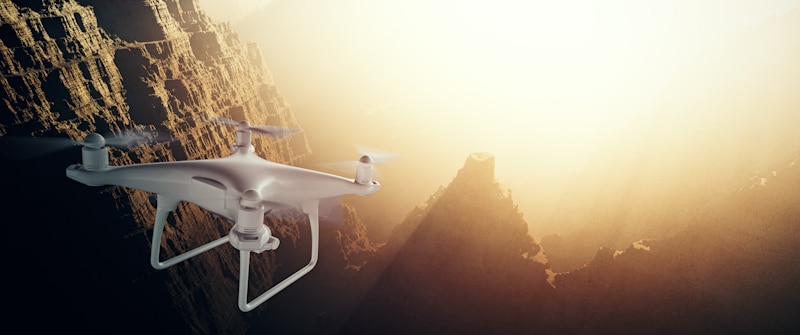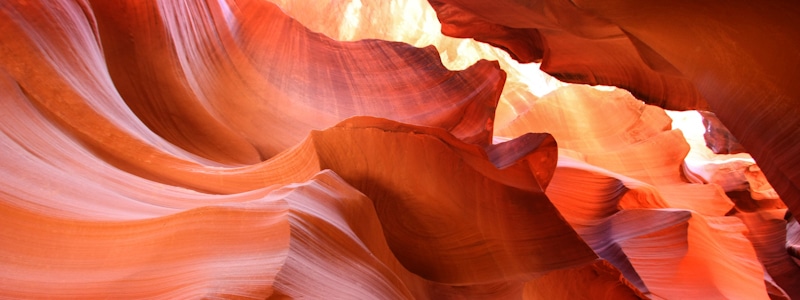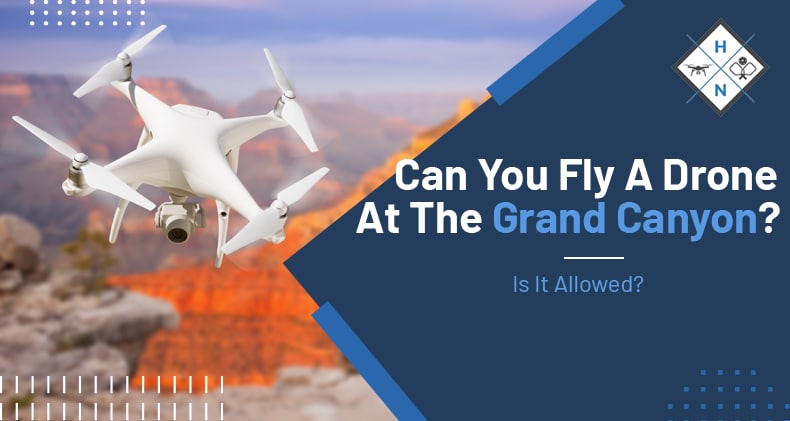The Grand Canyon is one of the most popular national parks in the United States. The Grand Canyon is one of the most visited natural attractions globally, and more than five million tourists visit the Grand Canyon annually. The Grand Canyon is a beautiful example of arid-land erosion globally.
No, flying a drone at the Grand Canyon is prohibited by the National Park Service (NPS). The National Park Service banned the flight of recreational drones within all national parks in June 2014. Also, flying a drone at the Grand Canyon puts you within range of the GC Airport and flight paths.
As an enthusiastic hobby drone pilot who is also adventurous, you will want to explore different places where you can capture breathtaking images and videos with your drone. However, you must know the Grand Canyon is not one of the places to go flying your drone. Below are some explanations on why you must never fly your drone in the Grand Canyon.

Can You Fly A Drone Over The Grand Canyon?
You probably think that since you cannot fly your recreational drone in the Grand Canyon, you can fly it over the Grand Canyon. We will provide some reasons why you cannot fly your drone over the Grand Canyon.
The Grand Canyon is a steep-sided canyon formed by the Colorado River, Arizona, in the United States; it has a length of 446 kilometers (277 miles), a width of 29 kilometers (18 miles), and a depth of 1857 meters (1 mile or 6093 feet). There are many interesting facts about the Grand Canyon that can make you want to fly your drone over it, and you must fight the urge.
It is a national park that is under the control of the National Park Service. Hence, all laws concerning every area of this park are made by the National Park Service. It is also crucial that you also remember to abide by the rules of the Federal Aviation Administration.
The National Park Service knows that the ban of drones flying inside any national parks has a loophole that will allow you to fly your drone over national parks. It is possible to think that the prohibition of drone flying in the Grand Canyon means you can still fly a drone over the park.
Flying your recreational drone over the Grand Canyon can make you receive a citation. When flying above the park, there are many possibilities and chances that you might fly too close to the wildlife, which will disturb and make them uncomfortable.
Flying over the Grand Canyon can cause a noise disturbance for wildlife. According to the Federal Aviation Administration, one of the laws regulating drones' flight is that drones must never interfere with wildlife. So, when you fly your drone over the Grand Canyon, there is a possibility that you will break that law.
The visual and noise distraction from drones and boisterous ones can provide a bad experience for tourists and other people who visit the Grand Canyon to enjoy the park's scenery and beauty.
Flying a drone over the Grand Canyon is still prohibited because you are still within the park's environs, whether outside the park or around it. Hence, flying a drone over the Grand Canyon is a bad idea, and the consequences are severe.
Where Can You Fly A Drone?
Since flying a drone within the Grand Canyon borders is banned, you probably wonder where you can fly your drone and still get a stunning and fantastic view. There are a few places that you can fly your drone without defying the drone law or the National Park Service rules and regulations.
These places are beautiful with fantastic scenery that you can capture. The National Park Service has no ban or limitations on these places, so you can fly your drone however you like.
These areas available for recreational drone flying are:
- National Forests: There is no restriction on the flying of drones at the National forest. The forest service has provided tips that help guide the general rules and what areas of a National forest prohibit drones.
- Local Parks: There are no rules on the flying of drones in local parks. In the absence of any rules, park staff can tell a drone pilot to stop flying if they pose a threat to the visitors' safety.
- State Parks: Parks maintained at the state level are the state parks. Each park district has the authority to create orders that regulate or prohibit drone flight.
Although it will not provide the quality of the Grand Canyon view, it will still give you something similar to the view and scenery of the Grand Canyon.
Flying your drone in these locations is done at ease and without problems as long as you comply and obey all the Federal Aviation Administration's rules and regulations for recreational drone pilots. It would be best if you also obeyed all the rules made by the parks' authorities concerning drone flying.
It would be better to always keep in mind that your recreational flying must not disturb people and wildlife in these areas. You have to be careful not to breach anyone's privacy in any manner.
While flying a drone in any of the parks approved, you must have an electronic or paper copy of the approval and your FAA registration certificate with you at all times.

What Happens If You Violate The Grand Canyon Drone Ban?
The Grand Canyon is a national park and also one of the seven natural wonders of the world. Hence it is highly secured, and drones' recreational flying within the park and its environs are highly prohibited and illegal.
The consequences of flying drones recreational within the Grand Canyon and its borders are severe. The National Park Service takes the ban it has placed on drones very seriously and does not hesitate to take extreme measures against anyone who refuses to acknowledge the rules.
The consequences faced as a result of flying a drone within the Grand Canyon is dependent on the reason you took that action. If one of the reasons you defied the law was ignorance, you might pay a fine depending on whether the security believes you. However, to be on the safer side, you must keep in mind that ignorance is not an excuse.
This is why you must have thoroughly studied every law and rules on recreational drone flying before you try to fly your drone anywhere. This makes us aware and conscious not to break any law of either the Federal Aviation Administration, the National Park Service, or any other authorized administration on drones.
Knowing that drones are banned in the Grand Canyon but still going on to fly your drone there could land you up to six months in prison, and you might also be asked to pay a fine of up to five thousand dollars. Your drone might also be collected from you, so you might never get your drone back. There are also possibilities that you might be banned for a certain period from the park.
There is a decent number of pilots banned from the Grand Canyon and given a prison sentence for ignoring the rules. However, none of them has been asked to pay a fine of precisely five thousand dollars. Still, it is better to abide by the National Park Service laws on drones than to do as you like and end up in prison or pay a massive amount of money.
Are All Drones Prohibited At The Grand Canyon?
The National Park Service has placed a drone ban law in the Grand Canyon and other national parks, and the drone ban applies to both recreational and commercial drones. However, it would be best to keep in mind that some drones were allowed at the Grand Canyon.
To fly a drone at the Grand Canyon, you will require a Special Use Permit given to you by the National Park Service. This permit is only issued for exceptional cases such as:
- Fire safety: If there is a fire outbreak in the park, a drone is sent to provide an extinguisher to kill the fire quickly. This method is easier and faster than when a human is the one doing all these things.
- Search and rescue: When someone reports the case of a mission friend or family member in the park, drones provided by the security of the Grand Canyon are dispatched with an identification of the missing person, so the person is found on time.
- Research purposes: Researchers also use drones in the Grand Canyon as long as they have a permit. The drones help them with their researches on wildlife and other things found in the park. They can take explicit videos and pictures for their research.
If you are caught flying your drone in the Grand Canyon without a permit, you will face the consequences. To get a permit from the National Park Service is almost impossible, so as a recreational drone pilot, you might not have a valid reason for the permit, and it will not be given to you.
So far, there have only been two popularly known cases where the Special Use Permit was granted to drone pilots. The parks where the permits were used are:
- Marsh-Billings-Rockefeller National Historical Park: In August 2015, a drone pilot was offered a permit to take pictures at the Marsh-Billings-Rockefeller National Historical Park to help create a large illustrated map of the park to display for visitors.
- Great Sand Dunes National Park: In January 2017, a drone was granted permission by the National Park Service to take pictures at the Great Sand Dunes National Park to collect aerial data to create accurate geospatial maps of the dunes.
The National Park Service has its reasons for banning drones in the Grand Canyon and other national parks. Most of these reasons have to do with drone pilots' previous actions and their lack of respect for the park's wildlife and visitors.
What Every Drone Pilot Should Know About Drones In National Parks
National parks are naturally one of the best places to fly a drone for recreation, but the National Park Service (NPS) believes otherwise. It has forbidden drones' flight in four hundred and seventeen parks, twenty-three nature trails, and sixty rivers managed by the National Park Service.
Since June 2014, the National Park Service has placed a ban on drones in national parks like the Grand Canyon. The ban, which was issued as a Policy Memorandum 14-05, states that "except approved in writing by the superintendent, it is forbidden to launch, fly, or land an unmanned aerial vehicle from or on waters and lands under the NPS management."
Notable mentions of the areas also managed by the National Park Service are walking trails, historic sites, seashores, battlefields, rivers, monuments, wilderness, forests, and biking trails; it is prohibited to fly a drone in any of these places.
It is prohibited for commercial and recreational drone pilots to fly their drones in any national park or area managed by the National Park Service.

The drone ban at the Grand Canyon was put in place because drones can disturb wildlife and people. The National Park Service is worried that the visual distraction and the drone's noise would negatively affect people visiting the parks.
Some of the situations that brought about the law on drone ban at national parks include:
- In May 2014, a drone was spotted separating several young bighorn sheep from adults in a herd which is distressing as sheep who lose their parents can die quickly.
- A man posted a drone video on YouTube taken at a national park in June 2014; his drone's flight was said to have disturbed the park's local bird population.
- A tourist crashed his drone in August 2014 into the Grand Prismatic Spring Geyser at a national park, and the drone is said to have a possible impact on the spring's thermal water and chemical balance; the tourist was fined a sum of $3200.
- A German tourist crashed his drone into Yellowstone Lake in September 2014; he was issued a fine of $1600 and a ban from the park for a year.
- An unrestrained drone pilot forced a national park's helicopter to land to avoid a head-to-head collision in August 2017.
- Skydio, a drone company, used footage of the Yellowstone National Park to promote its selfie drone in the spring of 2019.
The above events are reasons the National Park Service implemented a ban on drones at all national parks. The ban has helped improve visitors' experience, thereby creating the atmosphere you require to enjoy your visit. As a result of these incidents, the National Park Service came up with the rules to regulate drones' flight in national parks across the country.
Unless a drone pilot has obtained special permission from the Federal Aviation Administration, the use of unmanned aircraft around National Parks and areas managed by the NPS is forbidden.
While these laws only apply to National Parks, you should check out each city, county, and state laws that regulate the flight of drones within their jurisdiction. Ignorance of the law is no excuse, and breaking one of these state laws attracts consequences.
Where Can I Fly A Drone In The Grand Canyon?
Technically, there is no place you can fly a drone in the Grand Canyon, you can launch and land your drone outside of the area managed by the National Park Service, but you must obtain permission from the landowner; otherwise, you can be sued for infringement.
If you launch your drone outside of the Grand Canyon, you can fly over it. One of the places you can launch your drone for flight is near the canyon gorge of Little Colorado River, east of the park boundary.
The areas where you can fly your drone are not a part of Grand Canyon Park, so this is the reason you may not be penalized for flying your drone. With the parking lot been on the gorge cliff's edge, you can also launch your drone from there and descend into the canyon from the cliff.
From the cliff, you can fly your drone to the west without having to break any of the Federal Aviation Administration rules about flying drones in national parks. To the north of the cliff, there is a dirt road you can fly your drone, which is outside the boundaries of the National Park, and this makes it a legal flight area. This is an exciting area to fly your drone in.

Final Words
Regardless of how tempted you are to fly your drone in the Grand Canyon, you must know that there are many severe consequences if you are found violating one of the laws and regulations.
Being a recreational drone pilot is much fun considering the number of beautiful and breathtaking places you can visit and fly your drones to capture unique pictures and footage. You are still required to abide by the Federal Aviation Administration regulations as well as other agencies with laws governing the flight of drones.
Shawn Manaher loves to play with new toys and dive into new hobbies. As a serial entrepreneur, work definitely comes first but there is always room for hobbies.

